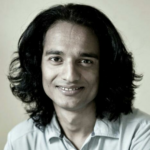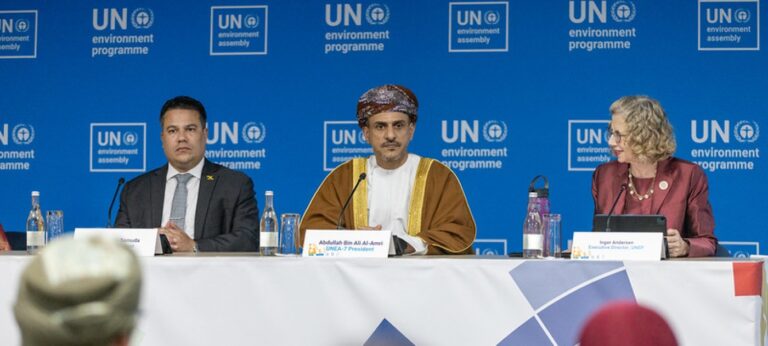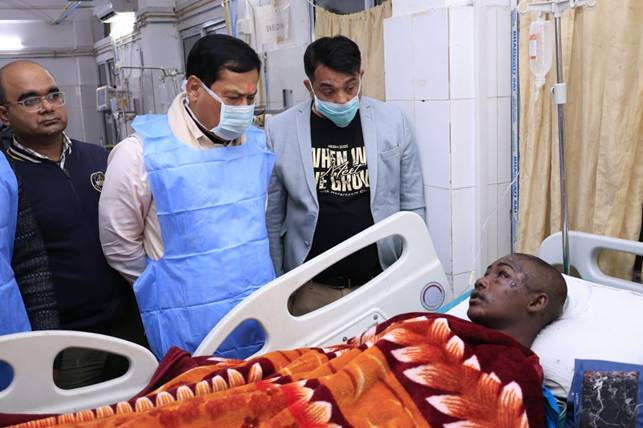
Shaheed Diwas: Mahatma Gandhi’s 75th death anniversary
 By Kaushal Kishore*
By Kaushal Kishore*
At last, the bloodshed that began due to the partition of India abruptly came to an end after the assassination of Mahatma Gandhi. It was on January 30, 1948, at the Birla House (now known as Gandhi Smriti) in the national capital. Since then 75 years have passed now. India celebrates the Amrit Mahotsav to mark the platinum jubilee of Independence.
The demands for Pakistan got a new lease of life on August 16, 1946, with the Direct Action Day that started at the behest of the Muslim League in Calcutta (now Kolkata) that soon reached the northwest province of Punjab. Meanwhile, a couple of million people died in the series of violence that continued for more than 500 odd days. Bapu had said in Noakhali that the creation of Pakistan would be on his dead body. The prayer meeting in Delhi which ended with his last phrase “Hey Ram”, proved his words were true at last.
The two-nation theory and the partition of India linked a series of violence that Jinnah and the Muslim League started with a call for direct action leading towards the creation of Pakistan. Gandhi bent upon his nonviolent weapon of fast to stop the violence, and the restoration of peace turned out to be the outcome of that sacrifice.
Partition created an atmosphere of unrest in South Asia. Pakistan is responsible for three wars against India. Pakistani Prime Minister Shahbaz Sharif recently conceded that his country has learnt lessons from all these wars. The appeal for permanent peace is yet another part of his statement.
A true tribute to the Mahatma will be to ensure peace in the Indian subcontinent. The best way to think about Gandhi’s martyrdom is to restore the peace that needs disarmament among global players.
Meanwhile Deputy Secretary-General of the United Nations, Amina Mohammed has referred to the conflicts laden modern times as most serious since the Second World War; a quarter of humanity is forced to live in war zones. The sense of security among people has decreased in almost every part of the world. The former Nigerian environment minister clearly stated that six out of seven people around the world suffer from a sense of insecurity. In addition to poverty and food crisis, she has focused on those deprived of education and health service. After her return from Afghanistan, she started to discuss the pathetic condition of women and children there. The condition of weaker sections in most parts of the world is rather worse.
The United Nations, direly in need of reform, has failed to address the crisis and the world is burning in the fire of war and violence. It has turned into a military-industrial complex engaged in making weapons of mass destruction.
In such a distressful situation, Gandhian politics of Satyagraha and non-violence are all the more relevant and necessary.
Indian Prime Minister Narendra Modi once suggested to Russian President Vladimir Putin to resolve the issues with Ukraine through dialogues instead of conflict and war. The United States, the United Kingdom and Germany along with the rest of the NATO (North Atlantic Treaty Organization) countries have been standing today with Ukraine.
The tension between China and Taiwan is erupting and may take the shape of the conflict between Russia and Ukraine. The armies of India and China have exchanged a series of ambushes and dialogues to settle disputes on the border. Violence and war have become a reality in other countries as well. The gap between the rich and poor is widening rapidly. The pandemic and the economic recession have added fuel to this fire. At the same time, installing Gandhi’s statue is in the progress. His pictures and statues are the parts of history before this 75th anniversary of his martyrdom. There is a need to focus on his teachings and messages too.
The fall of Tibet is a historical fact recorded after Gandhi’s assassination. It was a time when the world started to focus on humanity which coincided with the sufferings of the Tibetans. The Tibetan refugees have been unsuccessfully demanding justice all these years. The first prime minister of the Tibetan government-in-exile, Samdhong Rinpoche, has been waiting all along while holding Gandhi’s Hind Swaraj in his hands.
Gandhi introduced the politics of Satyagraha and non-violence in South Africa and India. The failure to pay attention to it reflects in the hue and cry that infests the Himalayas today. Amrit Mahotsav of his sacrifice lies in the resolve to ensure peace all over the world.
The release of a film, ‘Gandhi Godse Ek Yudh‘ that originally playwright Asgar Wajahat wrote as the play, Godse@Gandhi.Com, is another topic being discussed during Amrit Mahotsav of Gandhi’s martyrdom. Rajkumar Santoshi has adopted the play for the big screen. Before the release of the film, Mahatma’s grandson Tushar Gandhi and the Congress Party opposed it. The protest reached the streets in Madhya Pradesh. Its director is on the receiving end of death threats in Maharashtra. This is what emerged in the name of Gandhism, and the same has been fully functional for a long time.
Gandhi introduced Satyagraha in South Africa and India. He is known to raise serious objections to the practice of an eye for an eye theory that made his name emerge as synonymous with peace and non-violence. Gandhi would have pardoned Nathuram Godse since he never favoured the approach of revenge.
The trend of period films helped the new generations to learn history. American historian and author Stanley Wolpert focused on Bapu’s assassination in the sixties and wrote ‘Nine Hours to Rama‘ that Mark Robeson adapted for the big screen. Both of the creative works were banned in India. In the eighties, Sir Richard Attenborough made ‘Gandhi’ and it was widely appreciated. Kamal Haasan’s ‘Hey Ram’ is based on the tragedy of the partition. Now Wajahat and Santoshi take the story forward with the gunshots that Gandhi received. Meanwhile, Prof. K.N. Tiwari has written a novel ‘Uttar Kabir Nanga Fakir‘ with a similar creative liberty that became a part of the discussion in the 75th year of independence. The public discourse on Uttar (post) Kabir reached the threshold of Dakshin (right) Fakir.
Gandhi’s Hind Swaraj can be found in the works of these scholars. Santoshi seems to serve the dish after wrapping it in the context of celibacy versus man-woman-relationship. Bapu will continue to inspire the poet, playwrights and filmmakers in future too. The Amrit Mahotsav of martyrdom will be meaningful if he inspires those to shun their business that deal with military-industrial complexities and with weapons of mass destruction and a series of perpetual wars.





